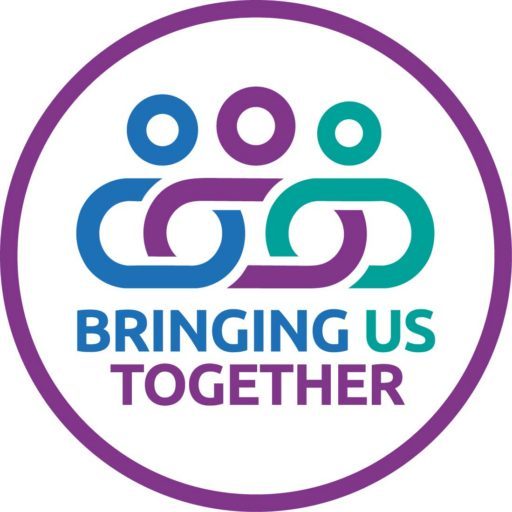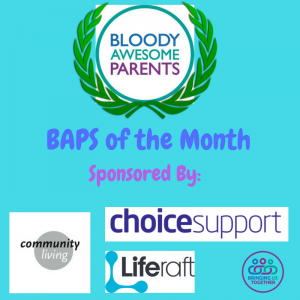Child and Adolescent Mental Health Services (CAMHS) Tier 4 Guide. What are they and how do they work?
Whilst the current Coronavirus pandemic is ongoing there may be some temporary changes to the services described below including arrangements for visiting patients in hospital. Further information will be provided by the hospital at the time of admission.
Introduction
To accompany the launch of our latest ‘Bringing Us Together’ guide I wanted to write this blog to tell you more about it, who it’s aimed at and why it’s so important.

The Guide is about Child and Adolescent Mental Health Services (CAMHS) Tier 4 assessment and treatment which is a range of specialist day and inpatient services for those with the highest level of need. You will often hear these hospitals referred to as Assessment and Treatment Units (ATUs).
It has been written specifically for families with children and young people under 18, who have learning disabilities, autism or both, and behaviour that challenges others who may come into contact with these services. Children or young people may be referred to Tier 4 CAMHS if community services are unable to meet their ongoing needs or as the result of a perceived mental health crisis.
Whilst families and their loved ones will be helped through this process by CAMHS health professionals it can be extremely complicated and hard to understand therefore patients and families may struggle to try and work out what each service does, how they are supposed to work and crucially what their rights are. That’s where this guide can help.
Given the sometimes intense nature of CAMHS Tier 4 services, most patients will be subject to certain restrictions to keep them and others around them safe. These restrictions and the care being provided have to be carried out in accordance with National laws to safeguard the rights and dignity of patients and to make sure that acceptable standards of care are maintained.
The aim of the guide, therefore, is to try and make these services and the legislation on which they are based easier to understand and as a result help families advocate for their loved one more effectively.
How to use the guide
The guide is intended to be used as a reference rather than something that would usually be read from cover to cover, though it’s up to you of course. To avoid the subject matter becoming overwhelming it might be helpful to dip in and out depending on your current needs and to refer to the links provided for more information if needed.
Use the guide to help you better understand the processes involved and as a window into the associated legislation. It will help you become familiar with the Codes of Practice for both the Mental Health Act and the Mental Capacity Act and to refer to these appropriately as and when necessary. Try not to take in too much at one go.
Why was it important to write this guide?
As the father of a lad with a severe learning disability, autism and severe and challenging behaviour I know from personal experience how hard it can be sometimes to meet the needs of our wonderful but often demanding loved ones on a day to day basis.
Over the past few years, I have been taking part in Care, Education and Treatment Reviews (CETRs) which are part of the NHS Transforming Care programme to help better meet the needs of children and young adults with LD and/or autism who also have behaviour that challenges others. This opportunity as an ‘expert by experience’ member of patient review panels has allowed me to see first-hand many of the challenges that families and their loved ones encounter with trying to get the needs of their loved ones met appropriately.
Very often the hardest thing can be to have our voices heard and our concerns taken seriously, which is vital as we are all experts by experience in our own right so I am really hoping that this Guide will give families the knowledge and the confidence to make sure they are involved appropriately, are able to ask relevant questions and challenge services where necessary.
What drives me, other than trying to do my best to support my own family of course, is a desire to share what knowledge and experience I have for the benefit of others in similar situations in the hope that I can make a small but positive difference.
Working Together
As I expect you know already hospitals are inspected regularly to make sure that they are delivering an acceptable standard of care but we know things can go wrong sometimes. This can be for many reasons and the majority of Care teams will try their best to resolve any problems quickly. My sincere hope is that this guide will help build positive relationships between patients, families and hospital staff as the result of a better mutual understanding by all concerned. Let’s build bridges not barricades and work together for the benefit of the vulnerable person at the heart of everything.
Ian Penfold
About the Author
Ian has two close family members living with learning disabilities and epilepsy. His son also has autism and severe and challenging behaviour. For many years he has been involved with a number of charities and organisations at many levels: as a local champion for the Challenging Behaviour Foundation, an ‘expert by experience’ reviewer on NHS England’s Care Education and Treatment programme, a member of Bringing Us Together who are a National family support CIC, he is also a special school governor and an active member of his County LD Partnership Board amongst other things. Ian is the principal author of this guide which has been written for Bringing Us Together.
Acknowledgements
The Guide contains a full list of all those who helped in its development but I would particularly like to thank Isabelle Garnett for her editorial expertise and her support in developing a number of the Sections dealing with specific topics and to Debs Aspland for her expert design and publishing skills.
Disclaimer
We have done our best to interpret and explain the relevant laws, guidance, procedures and implications involved and have taken expert advice where necessary from a legal and human rights perspective along the way. All information has been provided in good faith and readers are advised to seek legal advice if necessary.
Debs is one of the co-founders and Directors of Bringing Us Together. She is mum to three child with a variety of SEND and has a great husband.







